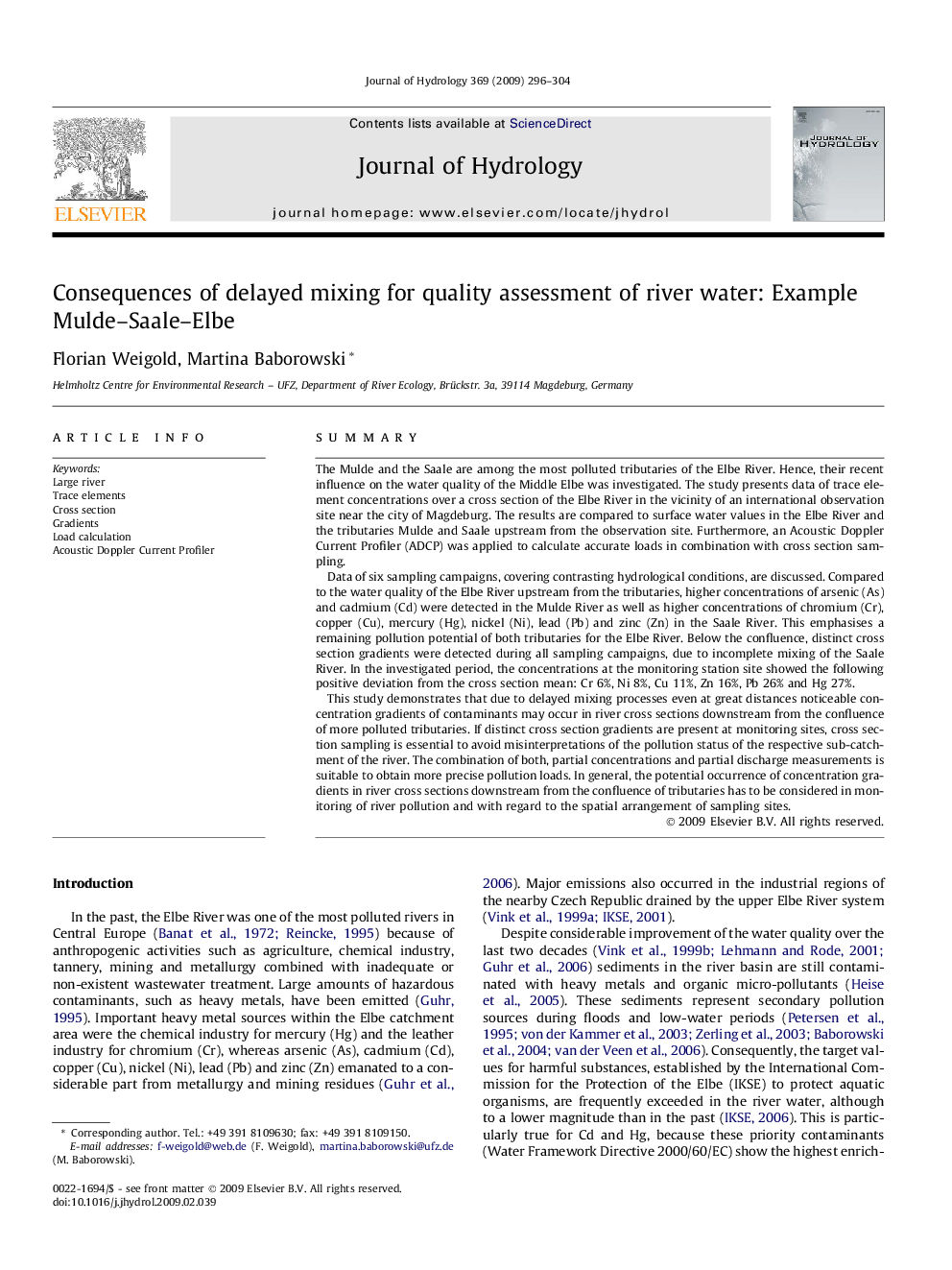| کد مقاله | کد نشریه | سال انتشار | مقاله انگلیسی | نسخه تمام متن |
|---|---|---|---|---|
| 4578924 | 1630083 | 2009 | 9 صفحه PDF | دانلود رایگان |

SummaryThe Mulde and the Saale are among the most polluted tributaries of the Elbe River. Hence, their recent influence on the water quality of the Middle Elbe was investigated. The study presents data of trace element concentrations over a cross section of the Elbe River in the vicinity of an international observation site near the city of Magdeburg. The results are compared to surface water values in the Elbe River and the tributaries Mulde and Saale upstream from the observation site. Furthermore, an Acoustic Doppler Current Profiler (ADCP) was applied to calculate accurate loads in combination with cross section sampling.Data of six sampling campaigns, covering contrasting hydrological conditions, are discussed. Compared to the water quality of the Elbe River upstream from the tributaries, higher concentrations of arsenic (As) and cadmium (Cd) were detected in the Mulde River as well as higher concentrations of chromium (Cr), copper (Cu), mercury (Hg), nickel (Ni), lead (Pb) and zinc (Zn) in the Saale River. This emphasises a remaining pollution potential of both tributaries for the Elbe River. Below the confluence, distinct cross section gradients were detected during all sampling campaigns, due to incomplete mixing of the Saale River. In the investigated period, the concentrations at the monitoring station site showed the following positive deviation from the cross section mean: Cr 6%, Ni 8%, Cu 11%, Zn 16%, Pb 26% and Hg 27%.This study demonstrates that due to delayed mixing processes even at great distances noticeable concentration gradients of contaminants may occur in river cross sections downstream from the confluence of more polluted tributaries. If distinct cross section gradients are present at monitoring sites, cross section sampling is essential to avoid misinterpretations of the pollution status of the respective sub-catchment of the river. The combination of both, partial concentrations and partial discharge measurements is suitable to obtain more precise pollution loads. In general, the potential occurrence of concentration gradients in river cross sections downstream from the confluence of tributaries has to be considered in monitoring of river pollution and with regard to the spatial arrangement of sampling sites.
Journal: Journal of Hydrology - Volume 369, Issues 3–4, 15 May 2009, Pages 296–304